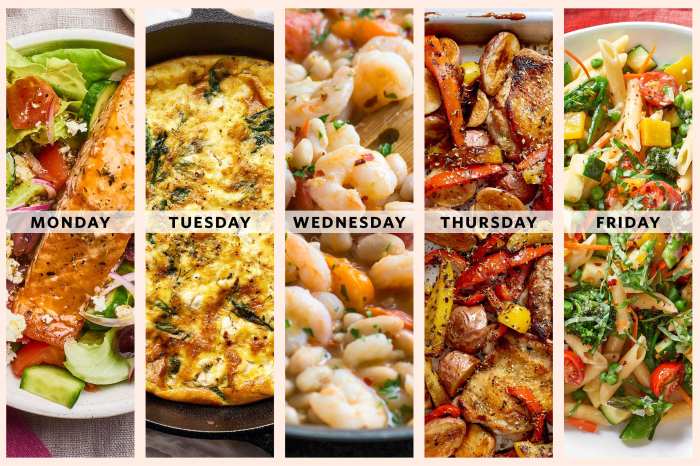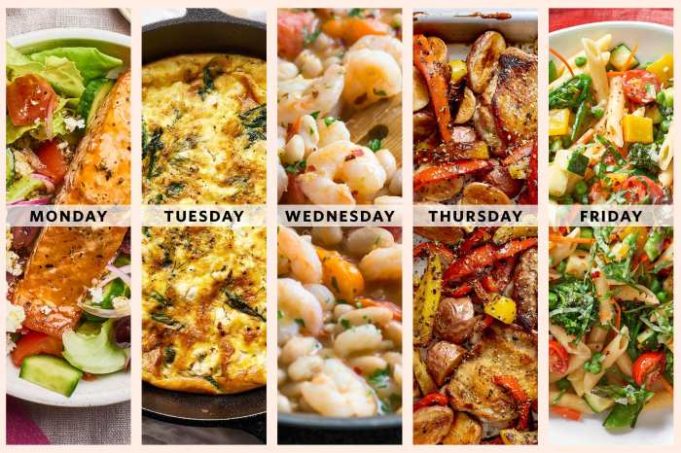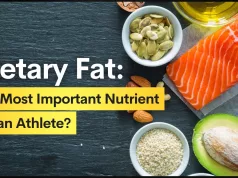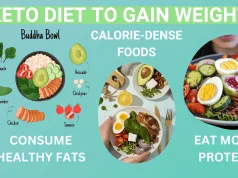Ideas for diet are abundant, but finding the right approach for your individual needs and goals can be overwhelming. This guide explores the fundamentals of healthy eating, examines popular diet plans, and provides practical tips for making sustainable dietary changes. We’ll delve into the science behind various diet approaches, debunk common myths, and empower you to make informed decisions about your eating habits.
From understanding macronutrients to incorporating exercise, we’ll cover essential aspects of a balanced lifestyle. Whether you’re looking to lose weight, improve your overall health, or simply want to eat better, this comprehensive resource offers valuable insights and actionable advice.
Understanding Diet Fundamentals
A balanced diet is the cornerstone of overall health and well-being. It provides the essential nutrients your body needs to function optimally, promoting physical, mental, and emotional health. A well-planned diet can help prevent chronic diseases, boost energy levels, and improve mood.
Macronutrients: The Building Blocks of a Balanced Diet
Macronutrients are the essential nutrients your body needs in large amounts to provide energy and support vital functions. These include carbohydrates, proteins, and fats.
- Carbohydrates are the body’s primary source of energy. They are broken down into glucose, which fuels the brain, muscles, and other organs. Complex carbohydrates, found in whole grains, fruits, and vegetables, provide sustained energy and are rich in fiber, which aids digestion. Simple carbohydrates, found in processed foods and sugary drinks, provide a quick burst of energy but can lead to blood sugar spikes and crashes.
- Proteins are essential for building and repairing tissues, producing enzymes and hormones, and maintaining a healthy immune system. They are made up of amino acids, which the body cannot produce on its own. Complete proteins, found in animal sources like meat, poultry, fish, and dairy, contain all nine essential amino acids. Incomplete proteins, found in plant sources like beans, lentils, and nuts, lack one or more essential amino acids.
- Fats are crucial for hormone production, cell function, and insulation. They also help absorb vitamins and provide a concentrated source of energy. Unsaturated fats, found in avocados, nuts, seeds, and olive oil, are considered healthy fats and can help lower cholesterol levels. Saturated fats, found in animal products like meat and dairy, should be consumed in moderation. Trans fats, found in processed foods, are unhealthy and should be avoided.
Calculating Daily Calorie Requirements
Determining your daily calorie requirements is essential for managing weight and achieving your health goals. This number varies based on factors such as age, gender, activity level, and body composition.
The formula for calculating basal metabolic rate (BMR), the number of calories your body burns at rest, is:
BMR for men = 66 + (6.23 x weight in pounds) + (12.7 x height in inches) – (6.8 x age in years)
BMR for women = 655 + (4.35 x weight in pounds) + (4.7 x height in inches) – (4.7 x age in years)
To calculate your total daily calorie needs, multiply your BMR by an activity factor that reflects your level of physical activity:
– Sedentary: BMR x 1.2
– Lightly active: BMR x 1.375
– Moderately active: BMR x 1.55
– Very active: BMR x 1.725
– Extremely active: BMR x 1.9
Popular Diet Approaches
The world of dieting is brimming with a diverse array of approaches, each claiming to be the key to achieving optimal health and weight management. While some diets may share similarities, others stand apart with unique principles and strategies. This section delves into the details of some popular diet plans, exploring their core tenets, potential benefits, and potential drawbacks.
Mediterranean Diet
The Mediterranean diet, inspired by the traditional dietary patterns of people living in the Mediterranean region, emphasizes whole, unprocessed foods. It’s characterized by a high intake of fruits, vegetables, legumes, whole grains, nuts, seeds, and olive oil.
The Mediterranean diet promotes heart health, reduces the risk of chronic diseases, and contributes to weight management. Studies have shown that this diet can help lower blood pressure, improve cholesterol levels, and decrease the risk of type 2 diabetes.
While the Mediterranean diet is generally considered safe and healthy, it’s important to note that some individuals may need to adjust their intake of certain foods based on their specific dietary needs or health conditions. For instance, people with kidney disease may need to limit their intake of potassium-rich foods, which are abundant in the Mediterranean diet.
DASH Diet
The Dietary Approaches to Stop Hypertension (DASH) diet is specifically designed to lower blood pressure. It emphasizes a balanced intake of fruits, vegetables, whole grains, low-fat dairy products, and lean protein sources. The DASH diet is rich in potassium, magnesium, and calcium, which are known to help regulate blood pressure.
The DASH diet is effective in lowering blood pressure, particularly in individuals with prehypertension or mild hypertension. Studies have shown that adhering to the DASH diet can lead to a significant reduction in systolic and diastolic blood pressure.
While the DASH diet is generally safe and effective, it may require some dietary adjustments for individuals with specific dietary needs. For instance, people with lactose intolerance may need to choose lactose-free dairy products or limit their intake of dairy products altogether.
Ketogenic Diet
The ketogenic diet, often referred to as the keto diet, is a high-fat, low-carbohydrate diet that forces the body to enter a metabolic state called ketosis. In ketosis, the body begins to burn fat for energy instead of carbohydrates. This results in a significant reduction in blood sugar levels and a decrease in insulin production.
The keto diet has been linked to weight loss, improved blood sugar control, and reduced inflammation. Studies have shown that the keto diet can be effective for weight loss in the short term, and it may also help improve insulin sensitivity and reduce the risk of type 2 diabetes.
However, the keto diet can have some potential drawbacks, including nutrient deficiencies, constipation, fatigue, and bad breath. It’s also important to note that the keto diet may not be suitable for everyone, particularly individuals with certain medical conditions, such as kidney disease or liver disease.
Intermittent Fasting
Intermittent fasting is an eating pattern that cycles between periods of eating and fasting. It’s not a diet in the traditional sense, but rather a way to regulate eating times. There are various intermittent fasting methods, including the 16/8 method, the 5:2 method, and alternate-day fasting.
Intermittent fasting has been linked to weight loss, improved insulin sensitivity, and reduced inflammation. Studies have shown that intermittent fasting can be effective for weight loss, particularly when combined with a healthy diet.
While intermittent fasting is generally considered safe for healthy individuals, it’s important to consult with a healthcare professional before starting any fasting regimen. It’s also crucial to listen to your body and avoid fasting if you experience any adverse effects.
Practical Tips for Healthy Eating
Making healthy eating choices is an important part of maintaining overall well-being. While understanding diet fundamentals and popular approaches provides a framework, implementing these principles in daily life requires practical strategies. This section explores valuable tips to make healthy eating a sustainable and enjoyable habit.
Sample Meal Plan
A well-balanced meal plan should incorporate a variety of nutrient-rich foods from all food groups. This ensures your body receives the necessary vitamins, minerals, and fiber for optimal functioning. Here’s a sample meal plan that provides a balanced intake of macronutrients and micronutrients:
- Breakfast: Oatmeal with berries and nuts, a whole-wheat English muffin with egg and avocado, or a smoothie with Greek yogurt, fruit, and spinach.
- Lunch: A salad with grilled chicken or fish, lentil soup with whole-wheat bread, or a veggie wrap with hummus and sprouts.
- Dinner: Baked salmon with roasted vegetables, lentil and vegetable curry with brown rice, or a vegetarian chili with black beans and corn.
- Snacks: Fruits like apples, bananas, or oranges, vegetables with hummus or peanut butter, a handful of nuts, or yogurt with granola.
Healthy Snack Options
Snacking can help curb cravings and prevent overeating at meals. However, choosing healthy snacks is crucial to avoid consuming empty calories. Here are some nutritious snack options that can help promote satiety and provide essential nutrients:
- Fruits: Apples, bananas, oranges, berries, pears, and grapes are rich in vitamins, minerals, and fiber, making them excellent choices for satisfying cravings.
- Vegetables: Carrots, celery, cucumbers, bell peppers, and broccoli are low in calories and high in nutrients. Enjoy them with hummus, peanut butter, or a light dip.
- Nuts and Seeds: Almonds, walnuts, cashews, sunflower seeds, and pumpkin seeds are packed with healthy fats, protein, and fiber. They can provide a satisfying crunch and help curb hunger.
- Yogurt: Greek yogurt is a good source of protein and calcium. Choose plain yogurt and add your own fruit, granola, or nuts for a flavorful and nutritious snack.
- Hard-Boiled Eggs: Eggs are a complete protein source and provide essential nutrients. Hard-boiled eggs are a convenient and satisfying snack option.
Mindful Eating, Portion Control, and Hydration
Mindful eating, portion control, and staying hydrated are essential for maintaining a healthy weight and promoting overall well-being.
- Mindful Eating: Pay attention to your body’s hunger and fullness cues. Eat slowly and savor each bite, allowing your body to register fullness. Avoid distractions while eating, such as watching television or using electronic devices.
- Portion Control: Use smaller plates and bowls to visually reduce portion sizes. Avoid supersizing meals and snacks. It’s helpful to measure portions initially to get a sense of appropriate serving sizes.
- Hydration: Drink plenty of water throughout the day. Water helps with digestion, reduces hunger pangs, and promotes satiety. Aim for at least eight glasses of water daily.
Incorporating Exercise
Exercise is an essential component of a healthy lifestyle, playing a crucial role in weight management and overall well-being. Regular physical activity not only helps shed extra pounds but also boosts energy levels, improves mood, strengthens bones and muscles, and reduces the risk of chronic diseases.
Types of Exercise and Their Benefits
Different types of exercise offer unique benefits. Here’s a breakdown of common exercise categories, their intensity levels, and their potential health advantages:
| Type of Exercise | Intensity Level | Health Benefits |
|---|---|---|
| Aerobic Exercise | Moderate to vigorous | Improved cardiovascular health, weight management, reduced risk of chronic diseases (e.g., heart disease, stroke, type 2 diabetes) |
| Strength Training | Moderate to vigorous | Increased muscle mass, improved bone density, enhanced metabolism, improved balance and coordination |
| Flexibility Exercise | Low to moderate | Improved range of motion, reduced risk of injury, increased flexibility and mobility |
Finding the Right Exercise Routine, Ideas for diet
It’s important to find an exercise routine that aligns with your preferences and fitness level. Here are some tips for finding a routine that works for you:
- Start gradually: Begin with short sessions and gradually increase duration and intensity as you become fitter.
- Choose activities you enjoy: This will make exercise more sustainable and enjoyable.
- Set realistic goals: Avoid overwhelming yourself with ambitious targets that are difficult to maintain.
- Find a workout buddy: Having a partner can provide motivation and accountability.
- Listen to your body: Rest when needed and avoid pushing yourself too hard, especially when starting out.
- Seek professional guidance: Consult a healthcare professional or certified trainer for personalized recommendations.
Addressing Common Diet Challenges
Embarking on a dietary journey often involves hurdles and setbacks. Understanding and addressing these challenges is crucial for long-term success.
Managing Cravings
Cravings can be powerful and difficult to resist, especially during the initial stages of dietary change. They often arise due to physiological and psychological factors.
- Physiological factors include fluctuations in blood sugar levels, hormonal changes, and nutrient deficiencies. For example, a sudden craving for sweets could be a sign of low blood sugar.
- Psychological factors, such as stress, boredom, or emotional eating, can also trigger cravings. For instance, reaching for comfort food during stressful situations is a common example.
Strategies for managing cravings include:
- Identify triggers: Pay attention to the situations, emotions, or times of day that typically lead to cravings. This awareness helps you prepare and avoid these triggers.
- Plan ahead: Pack healthy snacks and meals to avoid impulsive choices when cravings strike. Having readily available options helps resist unhealthy temptations.
- Distract yourself: Engage in activities that divert your attention from cravings, such as going for a walk, listening to music, or spending time with loved ones.
- Choose healthier alternatives: When a craving is strong, opt for a healthier version of the desired food. For example, instead of a chocolate bar, choose a piece of dark chocolate or a fruit with a bit of dark chocolate.
- Seek professional guidance: If cravings are persistent or significantly impacting your diet, consider consulting a registered dietitian. They can help you address underlying causes and develop personalized strategies for managing them.
Wrap-Up

Ultimately, the best diet is one that you can sustain long-term. Remember, healthy eating is a journey, not a destination. By understanding the principles of balanced nutrition, embracing a variety of nutrient-rich foods, and making gradual changes, you can achieve your dietary goals and enjoy a healthier, happier life.
Clarifying Questions: Ideas For Diet
What are the best foods to eat for weight loss?
Focus on whole, unprocessed foods like fruits, vegetables, lean proteins, and whole grains. These are naturally low in calories and high in nutrients, which can help you feel full and satisfied while supporting a healthy weight.
Is it necessary to count calories?
Calorie counting can be helpful for some people, but it’s not essential for everyone. Focusing on making healthy food choices and being mindful of portion sizes is often more sustainable than strict calorie tracking.
How can I manage cravings?
Cravings can be tricky, but there are strategies to manage them. Ensure you’re eating regular meals and snacks to avoid extreme hunger. Stay hydrated, as dehydration can sometimes trigger cravings. And when cravings hit, try distracting yourself with an activity or opting for a healthy alternative.
Finding the right diet for you can be a journey, but it’s essential to remember that weight loss isn’t just about what you eat, it’s also about how you move. It’s often a question people ask: is running the best way to lose weight ?
While running can be a fantastic way to burn calories, it’s important to consider your individual fitness level and goals when choosing an exercise routine. Ultimately, the best diet for you will be one that you can stick to and enjoy, and that includes finding an exercise plan that you love and can integrate into your lifestyle.
When considering dietary changes for your furry friend, it’s essential to research various options and consult with a veterinarian. One popular approach is the raw diet, but you might wonder if it’s truly beneficial for your dog. To learn more about the potential benefits and drawbacks of a raw diet, you can check out this helpful resource: is a raw diet good for dogs.
Ultimately, the best diet for your dog will depend on their individual needs and lifestyle, so consider all factors before making any significant changes.
Finding the right diet plan can be overwhelming, with so many different ideas floating around. From cutting out specific food groups to focusing on whole, unprocessed foods, it’s easy to feel lost. If you’re looking for a structured approach, exploring different types of diets to lose weight can be a great starting point.
Understanding the principles behind various diets can help you tailor your own approach and discover what works best for your lifestyle and goals.
























